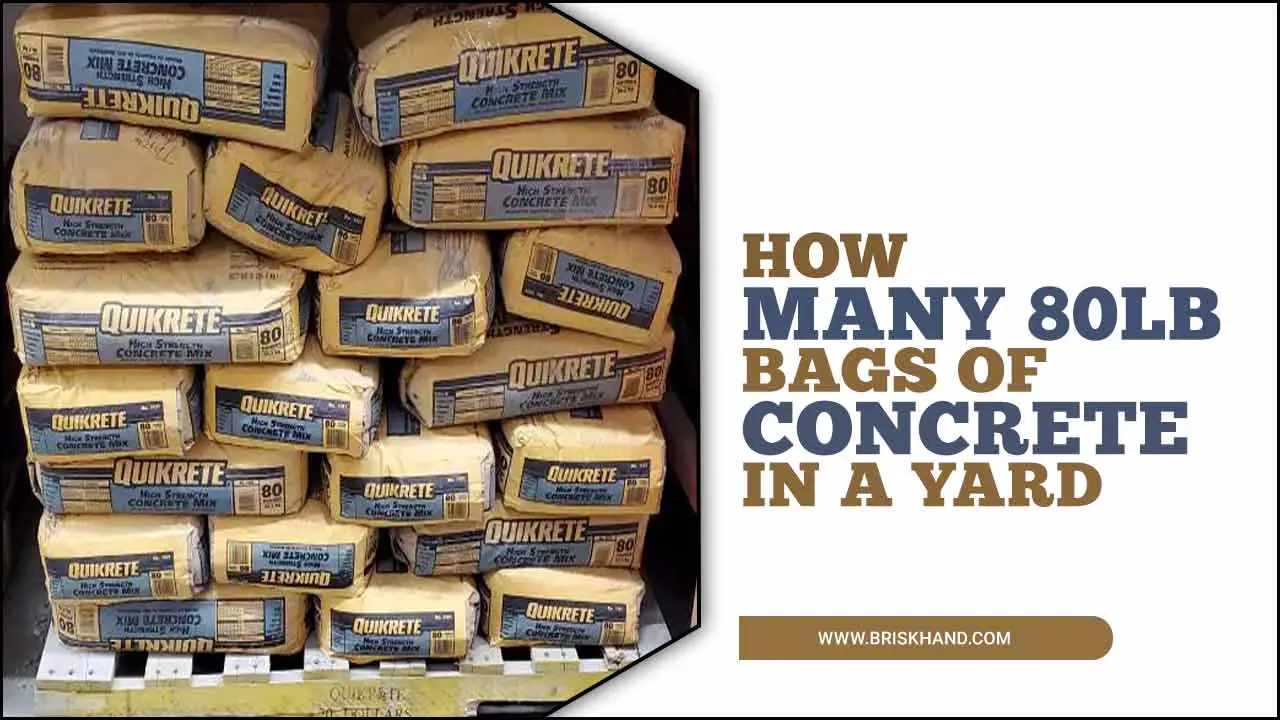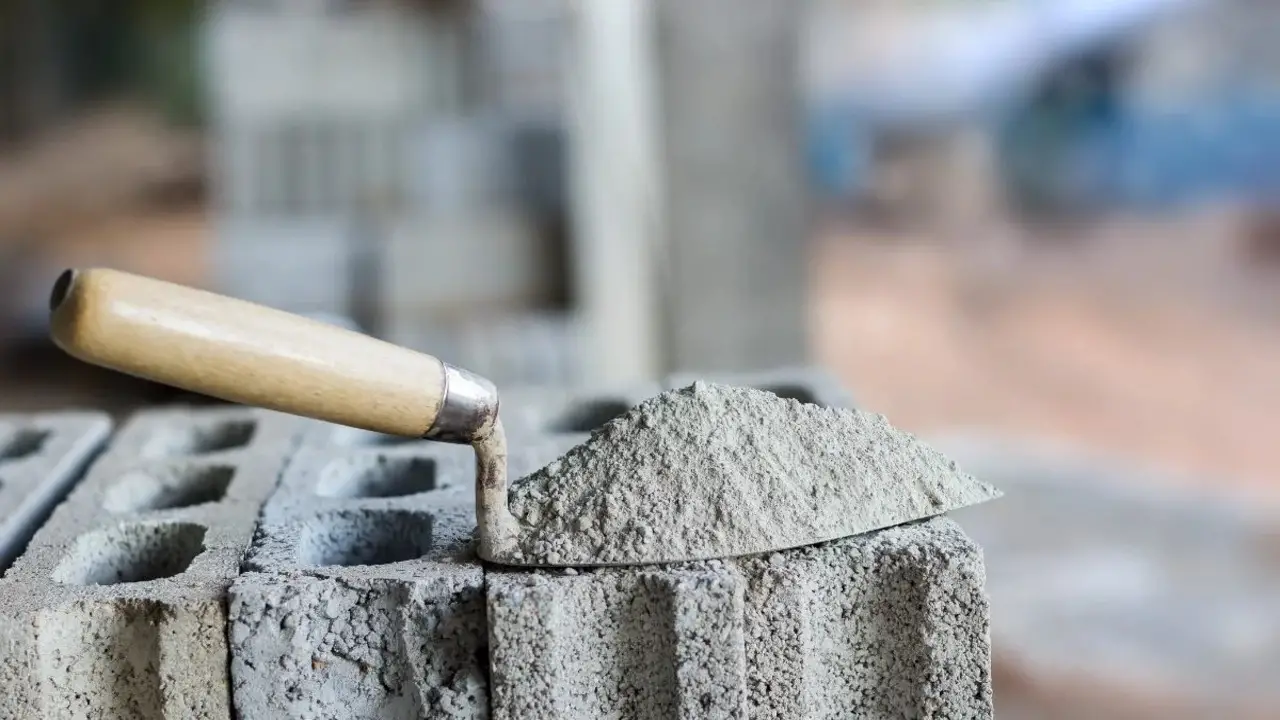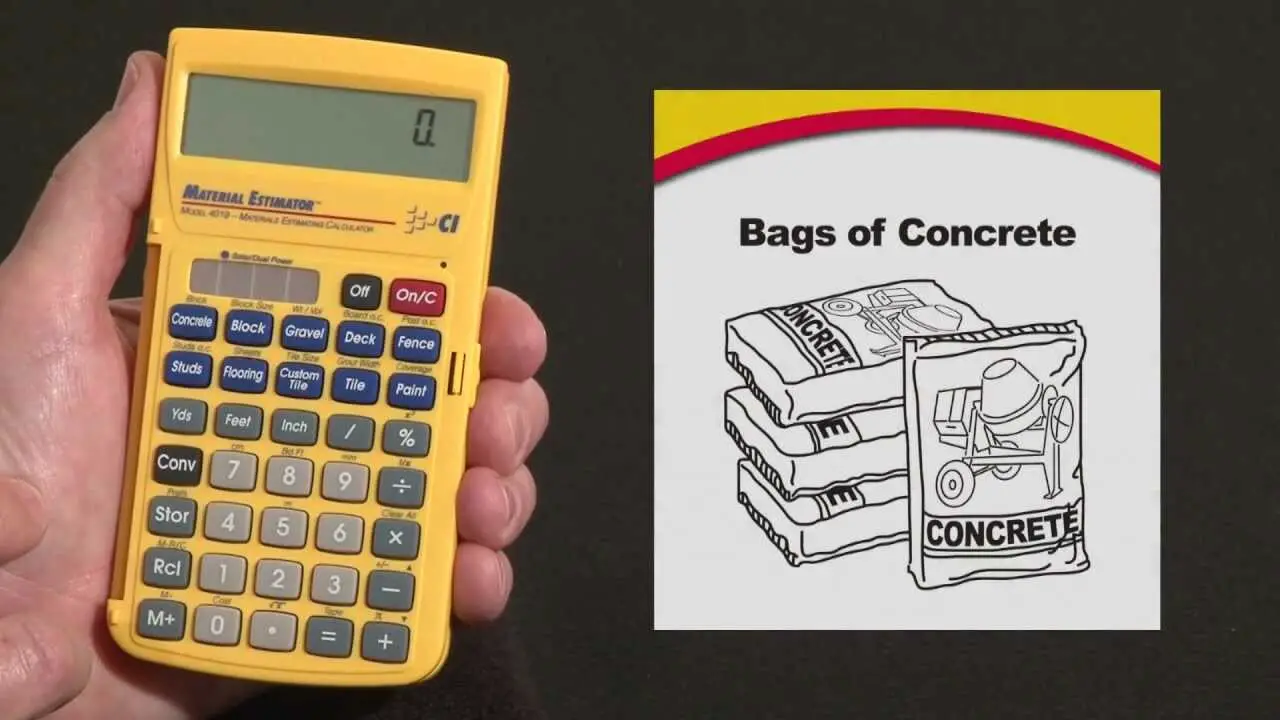Are you struggling to determine the amount of concrete needed for your upcoming project? Whether you’re a contractor or a DIY enthusiast, it’s essential to know the right amount of material to use to avoid wastage or shortage.
Concrete is one of the most versatile building materials, but determining the amount required can be daunting, especially if you’re not familiar with the measurement system.
One of the most common questions about concrete is, “How many 80lb bags of concrete in a yard?” This question is often asked because 80lb bags are the standard size for most concrete mixtures.
Here we’ll provide you the answer with a comprehensive guide on how to calculate the amount of concrete required for your project. We’ll explore the different factors that affect the amount of concrete needed and

Introduction To Cubic Yards
Cubic yards, a unit of measurement used to quantify volume, play a crucial role in construction and landscaping. Understanding cubic yards is essential when ordering bulk materials such as concrete. One cubic yard is equivalent to 27 cubic feet. To calculate cubic yards, multiply a space’s length, width, and height in feet and divide by 27.
This calculation helps determine the amount of materials needed for a project. By grasping the concept of cubic yards, you can confidently estimate the quantities required for your construction or landscaping endeavors.
How Many 80lb Bags Of Concrete In A Yard – Explained In Details

To determine how many 80lb bags of concrete are needed for a yard, it is important to understand the volume that one bag of concrete can cover. Typically, one 80lb bag of concrete can cover around 0.6 cubic feet, and 1 Yard = 27 cubic feet. So 80lb bags of concrete (27 ÷ 0.6)= 45 80lb bags.
To calculate the number of bags needed, you will need to divide the total cubic footage of the area by 0.6. For example, if you have a yard that measures 100 square feet and you want to pour a 4-inch thick slab, which would be approximately 33.3 cubic feet (100 sq ft x 4 in = 400 cu ft ÷ 12 in = 33.3 cu ft), you would need approximately 55.5 bags of concrete (33.3 cu ft ÷ 0.6 cu ft/bag = 55.5 bags). It is always recommended to purchase slightly more bags than calculated to account for any potential waste or discrepancies in mixing ratios. how many 80lb bags of concrete in a yard.
How Much Does One 80lb Bag Of Concrete Cost?

The cost of one 80lb bag of concrete can vary depending on several factors, including location and supplier. On average, you can expect to pay around $5 to $7 per bag. However, prices may be higher or lower depending on your specific location and any additional fees or taxes that may apply. It is always a good idea to check with local suppliers or home improvement stores for the most accurate pricing information in your area.
How Do Different Bag Weights Affect The Calculation?

Calculating the number of concrete bags needed for a yard project can be a bit tricky, especially when different bag weights are involved. The weight of a bag of concrete typically ranges from 40 to 80 pounds. To calculate how many bags you’ll need, you’ll first need to determine the volume of concrete required for your project.
This can be done by multiplying the length, width, and depth of the area you want to fill with concrete. Once you have the volume in cubic feet, divide it by the yield per bag (which is usually mentioned on the bag) to get the total number of bags required. Keep in mind that if you’re using bags with different weights, you’ll need to adjust your calculation accordingly.
For example, if you’re using 60-pound bags instead of 80-pound bags, you’ll need more bags to achieve the same volume of concrete. It’s always a good idea to consult with a professional or use an online calculator to ensure accurate calculations for your specific project.
Practical Applications Of Concrete Bag Calculations

Accurate calculations of concrete bags are crucial for projects of all sizes. You can save time and resources by ensuring you have enough bags to complete the job without running out. Avoid excess bags that may go to waste or cause unnecessary expenses.
Use bag calculations as a guide to estimate project costs and plan accordingly. Proper planning leads to efficient use of materials and successful project completion. Having the right number of bags is essential for smaller jobs like ramps or curbs or larger projects like foundation walls.
Estimation For Small Projects
Using a concrete calculator for small projects like patios or walkways can help determine the number of bags needed. Simply measure the area’s length, width, and thickness and input the values into the calculator. This will provide an estimate of the number of bags required. It’s always a good idea to purchase extra bags to account for any errors or adjustments that may be needed during the project. By following this estimation method, you can ensure enough bags of concrete to complete your small project efficiently.
Estimation For Larger Projects
For larger projects like foundations or driveways, seeking assistance from a professional or supplier experienced in concrete work is advisable. Considering factors such as depth, reinforcement, and site conditions, they can provide accurate estimations tailored to your project’s requirements.
Renting a concrete mixer is worth considering for large-scale projects to ensure consistent quality and ease of mixing. Consulting with experts helps determine the number of 80-pound bags of concrete required and ensures an accurate estimate, saving you time, effort, and potential waste.
Factors Influencing The Number Of Bags Needed
Several factors can influence the number of 80lb bags of concrete needed for a yard project. Considering these factors, you can more accurately estimate the number of 80lb bags of concrete needed for your yard project. Here are some key factors to consider:
- Project size: The size of your project will determine how much concrete you need. Measure the length, width, and depth of the area you plan to pour concrete into and calculate the volume in cubic yards.
- Waste factor: It’s important to account for any waste or spillage during the pouring process. A general rule of thumb is adding 10-20% to your total volume calculation to ensure you have enough concrete.
- Mixing ratio: Different projects require different mixing ratios of concrete. Be sure to check the instructions on the bag of concrete mix you are using and adjust your calculations accordingly.
- Site conditions: Consider any conditions that may impact the amount of concrete needed, such as uneven surfaces or slopes. These factors may require additional concrete for leveling or shaping purposes.
How To Economically Purchase Concrete Bags?

When it comes to purchasing concrete bags, there are a few things to consider to do so economically. First, calculate the concrete you need for your project by determining the volume in cubic yards. Then, check the packaging of the concrete bags to see how many pounds each bag contains. Typically, an 80lb bag of concrete covers about 0.6 cubic feet.
Since there are 27 cubic feet in a cubic yard, you can divide 27 by 0.6 to determine how many bags you need per yard. In this case, you would need approximately 45 bags of 80lb concrete to cover one cubic yard. However, buying a few extra bags is always a good idea in case of any mishaps or miscalculations during the pouring process. By following these steps and purchasing the appropriate number of bags, you can ensure that you are getting the most bang for your buck when it comes to buying concrete for your project.
Conclusion
To sum up, calculating the number of 80lb bags of concrete needed for a project depends on various factors such as the project size, moisture content, and the type of project. It is essential to clearly understand how to calculate the number of bags required accurately.
By considering these factors and doing the necessary calculations, you can ensure you purchase the right amount of concrete for your project, avoiding waste and unnecessary expenses. Additionally, it is wise to consider the cost of the bags and explore options to purchase them economically. By doing so, you can complete your project efficiently and within budget. We mentioned above how many 80lb bags of concrete in a yard.
Frequently Asked Questions
How Many 80lb Bags Of Concrete Do I Need For A 10×10 Slab?
To cover a 10×10 slab with concrete, you’ll need around 8-9 bags of 80lb concrete. The exact quantity may vary based on the thickness of the slab. Buying extra bags is advisable to account for any errors or discrepancies. Always follow the manufacturer’s instructions when mixing and pouring the concrete.
How Many 90-Pound Bags Of Concrete Do I Need For 1 Yard?
Approximately 45 bags of 90-pound concrete are required for one yard. Remember to consider the slab’s thickness and the size/type of the project. It’s always a good idea to buy extra bags if more concrete is needed.
Is It Cheaper To Mix Your Own Concrete?
Mixing your own concrete can be more cost-effective, especially for larger projects. However, it requires additional time, effort, and the necessary tools and equipment. Before deciding, calculate the cost of materials and labor to determine if mixing your own concrete is cheaper.
How Much Does A Yard Of Concrete Cover At 4 Inches Thick?
A concrete yard covers approximately 80 square feet when poured at a thickness of 4 inches. It’s important to order slightly more than you need to account for potential waste or uneven pouring. Use an online calculator or consult a professional to determine the exact amount.
How Many 80lb Bags Of Concrete To Make A Yard?
Approximately 45 bags of 80lb of concrete are needed to make a cubic yard of concrete. This calculation assumes a standard mix ratio of 1:2:3 (cement, sand, and aggregate). The number of bags required may vary based on the mix ratio and project size. It’s always advisable to order slightly more concrete to account for unforeseen circumstances.

I am passionate about tools and electric work. I love finding new tools and experimenting with them.

